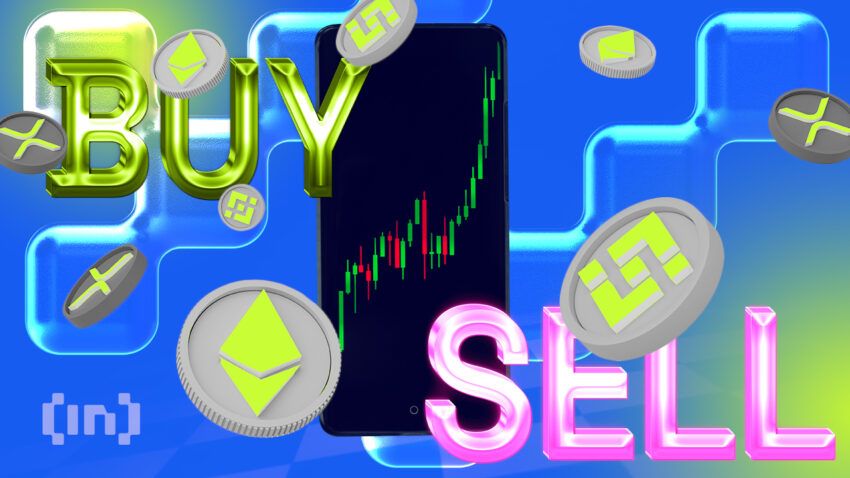Setting up a crypto wallet to send crypto can be complicated, even for the technically savvy. Some projects are trying to make that easier.
Entering the world of crypto is notoriously complex. Even the most straightforward projects and protocols can struggle to simplify the UX for non-crypto regulars.
Whereas the crypto community used to be dominated by developers and software engineers, now its ranks are filled with product managers, creatives, and those with no technical background whatsoever. Naturally, this has changed the software and solutions that get created. Arguably, where this change of culture has had the greatest impact is wallets: the core of the crypto ecosystem.
Making Crypto Wallets Simpler
“The big thing in crypto right now is how do we figure out what the next upcycle looks like?” Cobrin Page, the founder, and creator of Patch Wallet, told BeInCrypto. “It probably looks like we get another order of magnitude of users into this space. And the UX around onboarding is probably the number one issue we’ve got to solve.”
After heading the Fintech product team at ConsenSys, he went independent around a year and a half ago and began building his own projects. The latest of these is Patch Wallet, a product that he claims “everybody already has right out of the box.”
Patch Wallet uses a technique called account abstraction, which allows developers to produce smart contracts not bound to a specific blockchain account. This permits smart contracts themselves to function as wallets. And, in the case of Patch Wallet, it allows you to send crypto and digital assets like BTC or NFTs to someone who does not have a traditional crypto wallet.
“You already have one connected to your email, your Twitter, your GitHub, and so I call it kind of like a wallet before you need it,” Page said.
“I would say like this is kind of like the equivalent of your Venmo, or this is the equivalent of your in-game items or your in-game currencies, right? This just happens to run on crypto or blockchain rails.”
Page is very aware of the controversy and skepticism that calling his product a “wallet” will cause in the account abstraction community. It is, of course, not actually a wallet. It’s technically an account. “I’ll be in a Telegram group, and I’ll get slammed, and I’m like, you realize nobody outside of this group cares, right? The thing holds tokens and NFTs—it’s a wallet to most people.”
Ease of Pay
One option for sending crypto to a friend’s email address or phone number comes from Binance Pay. It purports to be an “easy pay” solution founded and operated by the world’s largest crypto exchange. Unlike some other solutions, Binance Pay requires its own Binance account to redeem your digital assets. In a discussion with BeInCrypto, Jonathan Lim, the Singapore-based head of Binance Card & Pay, said the firm sees it as “a basic and crucial step to increasing adoption.”
“What is important for Binance Pay is to continuously innovate and experiment with new ways to create a seamless payment experience for users and merchants, facilitating access to Web3 by bridging the worlds of CeFi and DeFi,” continued Lim.
“We see every feature that may affect users’ experiences as important; poor UX is definitely a barrier to product growth. Ease of usage is important. This applies to the entire user experience, be it technical design or the entire user journey. This ultimately impacts the branding too,” added Lim.
Take a Leaf From the Web2 Playbook
Redeem is a similar service that leverages a user’s existing points of contact to receive and receive crypto. Their service uses an existing phone number to link to a new blockchain wallet. Its team claims it takes only five seconds and two clicks to get started. “While social media platforms are ubiquitous today, personal phone numbers are much more widespread, accessible, and inclusive,” said Tony Rush, the firm’s CEO. “Someone may be indifferent to social media platforms, but chances are, they still have a phone number.”
In Rush’s view, there are certain questions which with many new users in Web3 struggle. “How do I register a wallet? What’s the difference between blockchains? Should I self-custody or use some third-party platforms? How not to lose my seed phrase? How to avoid fraud and scams? Can I send assets from one chain via another? What is ‘gas’ and where do I buy tokens to use the platform? These and countless more questions arise when regular people look at blockchain platforms. It can become inundating even for a tech-savvy person,” Rush commented.
The Web3 ecosystem needs to do better to simplify onboarding, Rush believes. If it is so difficult to send crypto, can we really expect newcomers to go deeper? He compares the space to Web2 social media platforms, which are “constantly working on new ways to simplify user onboarding, despite having millions or even billions of users already.”
“In this light, given that Web3 platforms are significantly more complex and intricate than their Web2 counterparts, excellent user experience is immensely more important for them to have a shot at mass adoption.”
Trusted
Disclaimer
Following the Trust Project guidelines, this feature article presents opinions and perspectives from industry experts or individuals. BeInCrypto is dedicated to transparent reporting, but the views expressed in this article do not necessarily reflect those of BeInCrypto or its staff. Readers should verify information independently and consult with a professional before making decisions based on this content. Please note that our Terms and Conditions, Privacy Policy, and Disclaimers have been updated.


